by Todd A. Black
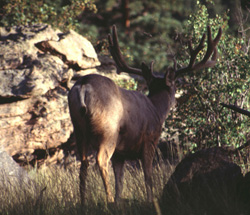 Most of us would have to agree ‘things just aren’t the way they used to be’. I’ve heard my dad and some of the other older generation (I’m 35) who have hunted mule deer for 40 or more years talk about the numbers of deer and quality of bucks observed and harvested in days gone past. While there always seems to be a good buck harvested here and there throughout the west today, the general consensus seems to be the same; our mule deer are in trouble. Some of us have turned to hunting elk and are excited about the increasing elk numbers, while others have been riding out the storm in hopes of the deer someday returning to their numbers of the past. Still others, those die hard mule deer hunters won’t even hunt unless they can draw some coveted tag where the numbers may not be what they once were but at least the quality is still there.
Most of us would have to agree ‘things just aren’t the way they used to be’. I’ve heard my dad and some of the other older generation (I’m 35) who have hunted mule deer for 40 or more years talk about the numbers of deer and quality of bucks observed and harvested in days gone past. While there always seems to be a good buck harvested here and there throughout the west today, the general consensus seems to be the same; our mule deer are in trouble. Some of us have turned to hunting elk and are excited about the increasing elk numbers, while others have been riding out the storm in hopes of the deer someday returning to their numbers of the past. Still others, those die hard mule deer hunters won’t even hunt unless they can draw some coveted tag where the numbers may not be what they once were but at least the quality is still there.
So what really has happened to our mule deer populations? Where have all the mule deer gone? If you asked this question to 20 different wildlife biologist you would most likely get a different answer from each of them. It amazes me as a biologist the response I get from this question; everyone has his or her own opinion and it’s hard to get a real good answer. The truth is mule deer and mule deer populations are complex and static and to narrow their decline down to one specific problem would be ludicrous. However, in talking with my peers I’ve come up with several real problems facing our mule deer right now. While I’m sure there are plenty more out there I would like to share a few of them with you. I do this only to help educate and in hopes of getting you involved as sportsman and nature lovers in helping us solve these problems in hopes of bringing mule deer back to suitable populations west wide.
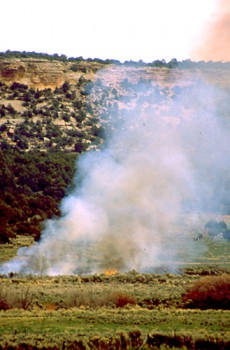
- First and foremost would have to be habitat. No doubt, there has been a loss of critical habitat in many areas and quality habitat (both summer and winter) is A#1 in having a successful mule deer population. If we were to have quality critical habitat everywhere, then most of the other problems would be insignificant and may not contribute to the overall decline in population numbers. However, studies have show you can have the best habitat in the world and still not have a healthy deer population.
Most of us when we think of habitat loss think of loss due to development. However, loss of habitat is more than just development, there are many other habitat losses that need to be considered; overgrazing, fire frequency, fire suppression, improper management, or simply a natural successional change in habitat are all habitat losses and they can and do contribute to loss in mule deer numbers and create fragmentation within a population. Further, lack of or bad habitat can increase predation, starvation, disease, stress levels, and general fitness of the animals by concentrating them in certain areas. Truth is we have lost some habitat that we will never get back. We’ve got to work with our local biologist and more importantly federal agencies (Bureau of Land Management, Forest Service) who are under federal mandate to manage the vast majority of mule deer habitat in the west. We need to identify, improve, and protect what we have left and then and only then will mule deer have a fighting chance to return. I’ve listened and talked with many people who gripe and complain about declining mule deer numbers, but very few of them get involved. We can’t just sit back and complain about the loss of habitat any longer and expect things to get better. When was the last time you set down with your local biologist and asked him or her what you could do to help? We can’t expect the habitat to change overnight, we must get involved and help where we can. - Second is proper management. Proper management shouldn’t even have to be mentioned but the fact is we haven’t been managing mule deer the way mother nature dictates they should be managed. I often wounder if we had just done things a little different a few years ago we might not be where we are today. Truth is we never really had to worry about management of mule deer because they always seemed to be doing fine. Management of mule deer is no easy thing by any means, and I don’t envy the task biologist working for state wildlife agencies face. Many have their hands tied and are too involved with the public and politics to really do their job. However, we can’t continue to change the natural history of the mule deer by our miss management and hope for the best. So where am I going with this you ask?
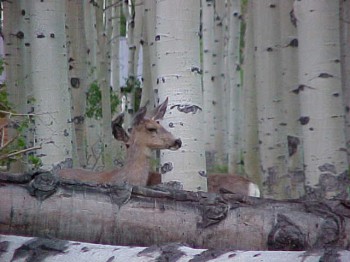 The natural history of mule deer dictates the does (females) will select to breed with the most dominant matue male in the population, this ensures a strong/’fit’ offspring and leads to a healthy population. This dominant buck, should be a 5-7 year old buck. Unfortunately there aren’t too many places in the west where this is happening. With the small groups of does and fawns we see during the rut it is almost impossible for one or two mature bucks to breed 30 does let alone 100. There might be a few places where the big boys are doing the majority of the breeding but this is certainly not the norm. What is more typical today is having yearling bucks, or 2.5 year old bucks doing the majority of the breeding. So why is this so bad? The genes are still there, it really shouldn’t matter right? Wrong! From a genetic point of view it doesn’t really matter. However, a doe usually won’t breed with an immature buck during her first estrus (usually November) cycle. However, if conditions are right, (if she is ‘fit’) she will come into estrus again the next month (usually December) and breed with a younger/juvenile buck if a mature buck is still absent. From a biological stand point this is probably the worst thing that can happen to mule deer. This leads to fawns being born in July/August instead of May/June, leading to smaller fawns in the winter, leading to higher fawn mortality during the winter months and being less ‘fit’ next spring. Ask your self when the last time you saw a fawn with its spots still in late August, this shouldn’t be. This can also effect the ‘fitness’ of the fawn leaving it more susceptible to disease, starvation, and predators. The ramifications of this one problem are almost endless. We just can’t continue to manage for quantity of animals, we’ve got to start managing for quality. This means we can’t have our yearling bucks doing most of the breeding, we must manage for an even age distribution of bucks in the population. Its important we realize this, we as hunters just can’t continue to kill anything that has antlers and expect our mule deer population to increase (I’m not saying we all need to be trophy hunters either). I find it funny as well as sad to listen to the younger generation say ‘we saw some real big two points’, how sad is that? I’ll bet many of these hunters haven’t even seen a 5.5 year old buck. I agree there needs to be a certain number of the yearling bucks taken from the populaton, but lets let a few of the bambies grow up and get big so they can breed the does. If we don’t and we continue down this path there won’t be any mule deer for our children to see except in zoos.
The natural history of mule deer dictates the does (females) will select to breed with the most dominant matue male in the population, this ensures a strong/’fit’ offspring and leads to a healthy population. This dominant buck, should be a 5-7 year old buck. Unfortunately there aren’t too many places in the west where this is happening. With the small groups of does and fawns we see during the rut it is almost impossible for one or two mature bucks to breed 30 does let alone 100. There might be a few places where the big boys are doing the majority of the breeding but this is certainly not the norm. What is more typical today is having yearling bucks, or 2.5 year old bucks doing the majority of the breeding. So why is this so bad? The genes are still there, it really shouldn’t matter right? Wrong! From a genetic point of view it doesn’t really matter. However, a doe usually won’t breed with an immature buck during her first estrus (usually November) cycle. However, if conditions are right, (if she is ‘fit’) she will come into estrus again the next month (usually December) and breed with a younger/juvenile buck if a mature buck is still absent. From a biological stand point this is probably the worst thing that can happen to mule deer. This leads to fawns being born in July/August instead of May/June, leading to smaller fawns in the winter, leading to higher fawn mortality during the winter months and being less ‘fit’ next spring. Ask your self when the last time you saw a fawn with its spots still in late August, this shouldn’t be. This can also effect the ‘fitness’ of the fawn leaving it more susceptible to disease, starvation, and predators. The ramifications of this one problem are almost endless. We just can’t continue to manage for quantity of animals, we’ve got to start managing for quality. This means we can’t have our yearling bucks doing most of the breeding, we must manage for an even age distribution of bucks in the population. Its important we realize this, we as hunters just can’t continue to kill anything that has antlers and expect our mule deer population to increase (I’m not saying we all need to be trophy hunters either). I find it funny as well as sad to listen to the younger generation say ‘we saw some real big two points’, how sad is that? I’ll bet many of these hunters haven’t even seen a 5.5 year old buck. I agree there needs to be a certain number of the yearling bucks taken from the populaton, but lets let a few of the bambies grow up and get big so they can breed the does. If we don’t and we continue down this path there won’t be any mule deer for our children to see except in zoos.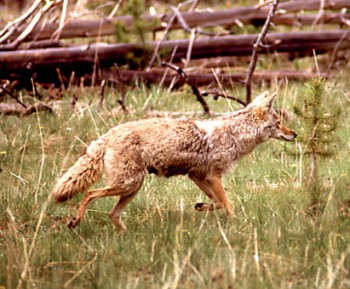
- Third in my book would have to be predators and elk. Now some of you might be scoffing right now but hear me out. First, I have to admit as a biologist under normal conditionspredator prey relations are important and natural and a predator will not have a negative impact on their prey or cause them to be exterminated. However, when this intricate balance between predator and prey is out of line then predator’s can have a negative impact on their primary prey. Right now, in my professional opinion we are way out of balance in many units and I think this is why many states have adopted emergency predator management plans. Bottom line is this, we can’t have an increasing elk, bear, lion, and coyote population and expect to have an increasing or even stable mule deer population. This is why I bring up elk. Elk in my opinion are providing a secondary prey source to these main predators that were not here (or at least in the numbers they are now) 20 years ago. There is a term called ‘the predator pit hypothesis’. It states when a primary prey (mule deer) are reduced in numbers by a natural event (winter, drought, loss of habitat), a predator species can continue to increase their numbers and supress their primary prey if they have a secondary prey (elk) which they can switch too. Over the past decade the number of bears and lions taken by hunters and state and federal agencies has increased dramatically. So to has the number of elk both bulls and antlers animals. The system is out of balance and it doesn’t favor mule deer. The real problem is what do we do now? With the many animal right groups out there we just can’t declare an all out war on predators. Further, I’m not so sure the way we kill and harvest predators doesn’t lead to their population increase in itself. When managing predators there are certain biological principles, which will help in the management of predators themselves. As an example, the way we presently hunt lions goes directly against their own population regulation. We all want to harvest the biggest mature tom we can find. However, by removing the big toms from the population we allow for two to three juvenile toms to come in and take over a large territory. Large toms kill juvenile toms and sometimes females. We would have much better management of this species if we limited the number of large toms we removed from the population and concentrated more on females and juveniles. Predator management is an important aspect of mule deer management and means need to be taken to keep predation in line with current prey populations.
- Fourth is perhaps one that really hasn’t been studied or looked at much but one that I think is effecting our mule deer in a certain way, perhaps even having a negative impact on them.
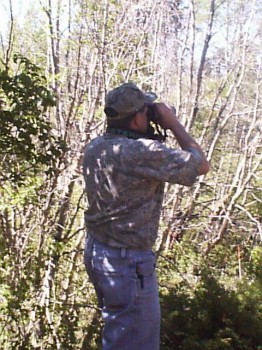 Have you ever wondered kind of impact and stress we as hunters, sportsman, and outdoor enthusiasts are putting on our mule deer populations? It all starts in January while observing deer on the winter range and ends in December one year later doing the same thing. It seems like outdoor activities are going on year round in mule deer country. Weather its camping, 4 wheeling and ATV use, snowmobiling, hunting, looking and scouting, hiking, shed hunting, not to mention the so called non-consumptive uses of the outdoors such as photography, surly all of these activities has to have some sort of an impact on the shy reclusive mule deer. Twenty years ago these type of activities may not have been a problem just simply because there wasn’t that much of it going on. The demand on our public lands for recreation has increased 10 fold over the past decade. With increased population comes an increased demand on our natural resources. So what is to be done about this? Again, I’m not sure there is an easy answer to this, any changes will most likely end up in court somewhere. No doubt, we all love to go out and look and enjoy nature and we aren’t going to let anyone tell us how or when we can do our recreating. However, at some point we’ve got to regulate ourselves and lessen the impact we are putting on mother nature and mule deer especially during critical rut and winter months.
Have you ever wondered kind of impact and stress we as hunters, sportsman, and outdoor enthusiasts are putting on our mule deer populations? It all starts in January while observing deer on the winter range and ends in December one year later doing the same thing. It seems like outdoor activities are going on year round in mule deer country. Weather its camping, 4 wheeling and ATV use, snowmobiling, hunting, looking and scouting, hiking, shed hunting, not to mention the so called non-consumptive uses of the outdoors such as photography, surly all of these activities has to have some sort of an impact on the shy reclusive mule deer. Twenty years ago these type of activities may not have been a problem just simply because there wasn’t that much of it going on. The demand on our public lands for recreation has increased 10 fold over the past decade. With increased population comes an increased demand on our natural resources. So what is to be done about this? Again, I’m not sure there is an easy answer to this, any changes will most likely end up in court somewhere. No doubt, we all love to go out and look and enjoy nature and we aren’t going to let anyone tell us how or when we can do our recreating. However, at some point we’ve got to regulate ourselves and lessen the impact we are putting on mother nature and mule deer especially during critical rut and winter months. - Lastly a big problem facing mule deer is lack of money and bad politics. Too often in may states mule deer management decisions are being made on the number of licenses sold instead of sound biological principals. We as hunters should be fighting tooth and nail with our local legislatures and public processes to give more general fund monies to our state wildlife agencies. We should demand accountability on how that money is spent and demand our state agencies follow their own management plans they have developed and not sell out because they are afraid of loss revenue. We shouldn’t complain about the price of licenses we should complain that the state isn’t getting more of our tax dollars to help run our wildlife resources. We shouldn’t sit idly by and gripe and moan about present problems. We need to organize ourselves as hunters and those concerned about our natural resources. We should get involved and help support those non-profit groups located in your area who contribute time and money to mule deer management. Only by giving of our time, helping our local game management people, and participating in the public process can we make a difference in mule deer populations.
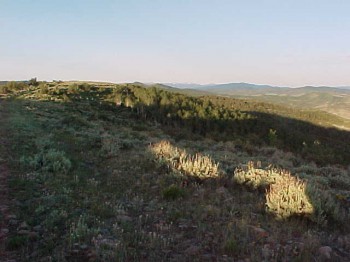 The truth is mule deer are in trouble throughout the west. Sure there are those areas where they are doing fine and don’t face a lot of problems as others do. However, these maybe bottleneck populations and all it wouldn’t take is for some limiting factor to change and in five years boom! they are in trouble as well. Some professionals would argue that the declining populations of mule deer is just part of natural selection and evolution, ‘the mule deer are on there way out’, its just a matter of time. Myself on the other hand, I would like to believe they still have a fighting chance. As a whole, I’m concerned as should each of you be, that if we don’t start doing something it maybe too late for mule deer. I’ve read enough to know and I understand a little about fragmentation, biology, and natural history to know having year after year of declining populations that it will only take another bad winter or two until someday they maybe gone. Hopefully through education, proper management, ethics, time, money, and a little luck we can bring the mule deer back to a number that our habitat can support. Wouldn’t it be nice once again not only to hunt and have the opportunity to harvest a mature buck but to see them how they once were?About the author; Todd A. Black is a wildlife biologist and environmental consultant and part owner of CWMS. He enjoys hunting, photography, birding, and spending time with his family. Originally from Blanding, Todd currently lives in Hyrum Utah.
The truth is mule deer are in trouble throughout the west. Sure there are those areas where they are doing fine and don’t face a lot of problems as others do. However, these maybe bottleneck populations and all it wouldn’t take is for some limiting factor to change and in five years boom! they are in trouble as well. Some professionals would argue that the declining populations of mule deer is just part of natural selection and evolution, ‘the mule deer are on there way out’, its just a matter of time. Myself on the other hand, I would like to believe they still have a fighting chance. As a whole, I’m concerned as should each of you be, that if we don’t start doing something it maybe too late for mule deer. I’ve read enough to know and I understand a little about fragmentation, biology, and natural history to know having year after year of declining populations that it will only take another bad winter or two until someday they maybe gone. Hopefully through education, proper management, ethics, time, money, and a little luck we can bring the mule deer back to a number that our habitat can support. Wouldn’t it be nice once again not only to hunt and have the opportunity to harvest a mature buck but to see them how they once were?About the author; Todd A. Black is a wildlife biologist and environmental consultant and part owner of CWMS. He enjoys hunting, photography, birding, and spending time with his family. Originally from Blanding, Todd currently lives in Hyrum Utah.



Leave a Reply
You must be logged in to post a comment.